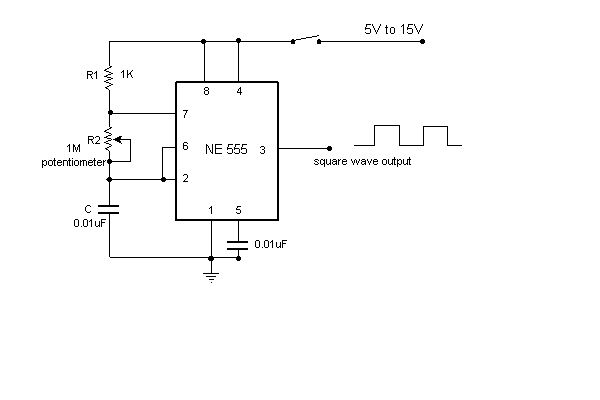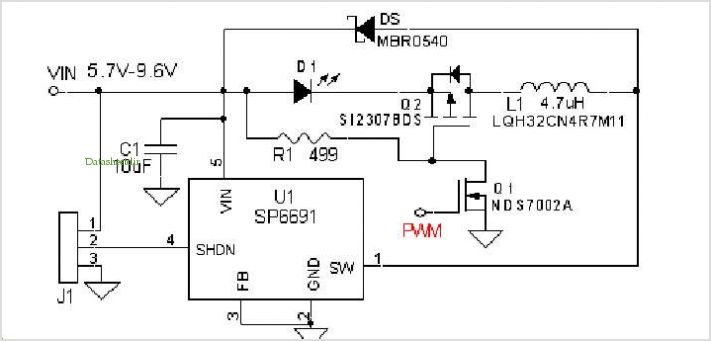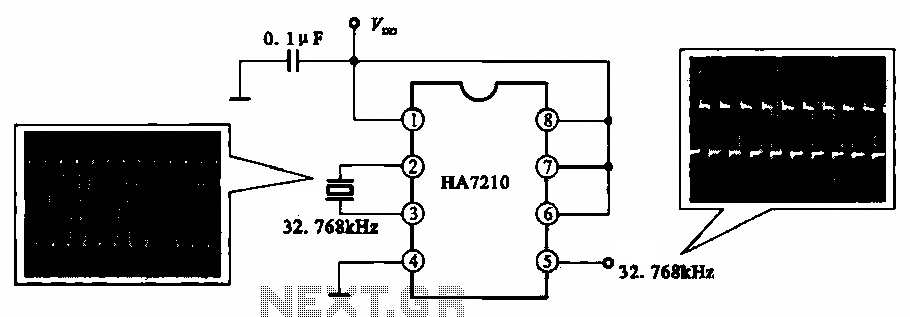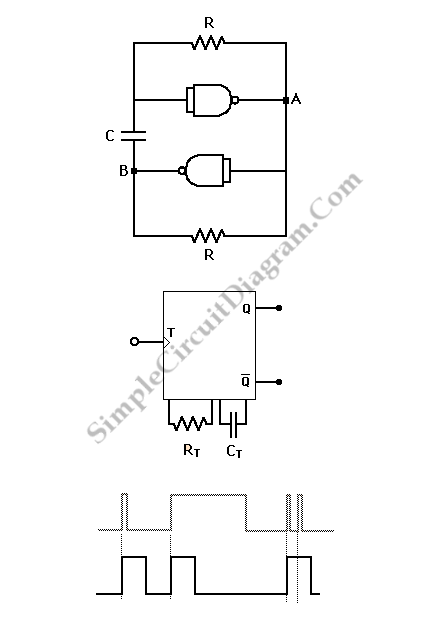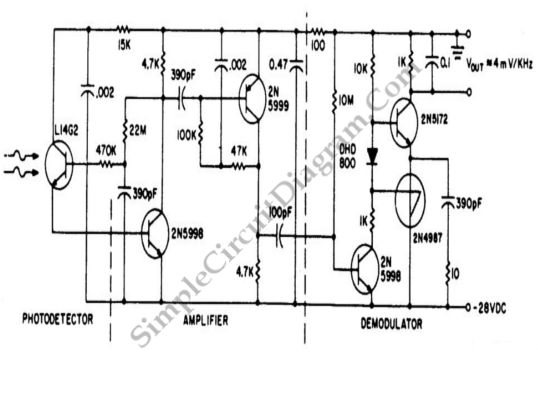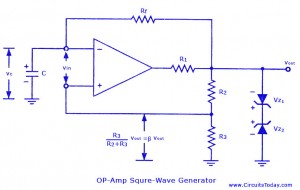
20 kHz ASTABLE
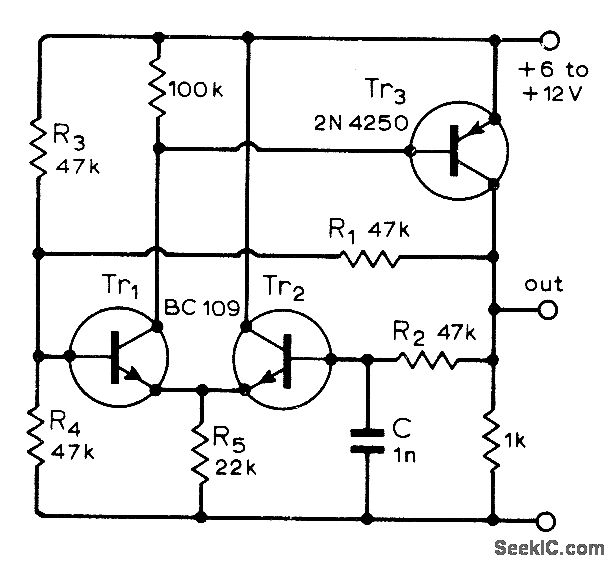
A single-capacitor circuit exhibits reliability across a wide range of temperatures, voltages, and transistor gains. The frequency varies by only 0.05% when the supply voltage changes between 6V and 12V. Timing adjustments can be made using resistors R1 and R2, as well as capacitor C. The duty cycle is determined by the ratio of resistors R3 to R4, maintaining a 50% duty cycle for the specified values.
This single-capacitor circuit design is characterized by its robustness, making it suitable for applications requiring stable performance under varying environmental conditions. The circuit primarily utilizes a single capacitor, which simplifies the design while ensuring reliable operation across different temperatures and supply voltages.
The frequency stability of 0.05% across a voltage range of 6V to 12V indicates that the circuit is well-suited for applications where power supply variations are common. This feature is particularly beneficial in battery-operated devices where voltage levels may fluctuate as the battery discharges.
Timing in the circuit can be adjusted by varying the values of resistors R1 and R2, along with the capacitance of C. This flexibility allows for customization of the timing characteristics to meet specific application requirements. By selecting appropriate resistor and capacitor values, the designer can achieve the desired timing intervals, making this circuit versatile for different timing applications.
The duty cycle, which is defined as the ratio of the on-time to the total cycle time, is influenced by the resistors R3 and R4. A 50% duty cycle indicates that the output signal is high for half of the cycle duration, which is often desirable in applications such as pulse-width modulation (PWM) or clock signal generation. The ability to maintain this duty cycle with the specified resistor ratios enhances the circuit's functionality in various electronic applications.
Overall, this single-capacitor circuit design is an efficient solution for timing and frequency generation, providing reliable performance and ease of customization for a wide range of electronic applications.Single-capacitor circuit is reIiable over wide range of temperatures. voltages. and transistor gains. Frequency varies only by 0. 05% for supply voltage changes between 6 and 12 V. Timing can be changed with R1. R2. and C. Ducy cycle depends on ratio of R3. to R4. and is 50% forvaluesshown. -C. Horwitz, Tolerant Astable Circuits. Wireless World. Feb . 1975, p93. 🔗 External reference
This single-capacitor circuit design is characterized by its robustness, making it suitable for applications requiring stable performance under varying environmental conditions. The circuit primarily utilizes a single capacitor, which simplifies the design while ensuring reliable operation across different temperatures and supply voltages.
The frequency stability of 0.05% across a voltage range of 6V to 12V indicates that the circuit is well-suited for applications where power supply variations are common. This feature is particularly beneficial in battery-operated devices where voltage levels may fluctuate as the battery discharges.
Timing in the circuit can be adjusted by varying the values of resistors R1 and R2, along with the capacitance of C. This flexibility allows for customization of the timing characteristics to meet specific application requirements. By selecting appropriate resistor and capacitor values, the designer can achieve the desired timing intervals, making this circuit versatile for different timing applications.
The duty cycle, which is defined as the ratio of the on-time to the total cycle time, is influenced by the resistors R3 and R4. A 50% duty cycle indicates that the output signal is high for half of the cycle duration, which is often desirable in applications such as pulse-width modulation (PWM) or clock signal generation. The ability to maintain this duty cycle with the specified resistor ratios enhances the circuit's functionality in various electronic applications.
Overall, this single-capacitor circuit design is an efficient solution for timing and frequency generation, providing reliable performance and ease of customization for a wide range of electronic applications.Single-capacitor circuit is reIiable over wide range of temperatures. voltages. and transistor gains. Frequency varies only by 0. 05% for supply voltage changes between 6 and 12 V. Timing can be changed with R1. R2. and C. Ducy cycle depends on ratio of R3. to R4. and is 50% forvaluesshown. -C. Horwitz, Tolerant Astable Circuits. Wireless World. Feb . 1975, p93. 🔗 External reference
Warning: include(partials/cookie-banner.php): Failed to open stream: Permission denied in /var/www/html/nextgr/view-circuit.php on line 713
Warning: include(): Failed opening 'partials/cookie-banner.php' for inclusion (include_path='.:/usr/share/php') in /var/www/html/nextgr/view-circuit.php on line 713
